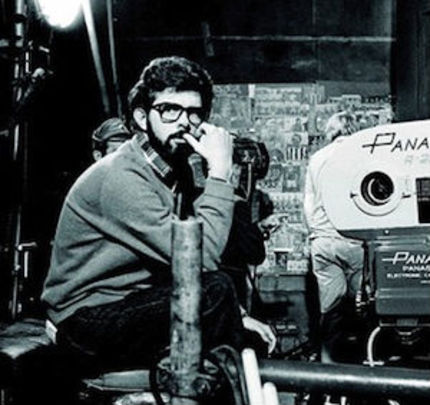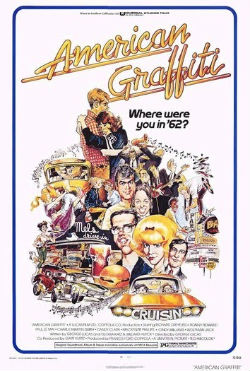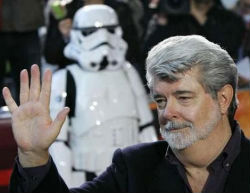Hollywood Grind: George Lucas as a Cautionary Tale

"Why is the public so stupid?" -- George Lucas in 1997, as quoted by Peter Biskind in his book Easy Riders, Raging Bulls.
(Hollywood Grind is a column that examines filmmakers working within the studio system to produce and/or distribute their work.)
The re-release of Star Wars, Episode I: The Phantom Menace in 3D may have grabbed the attention of hardcore film fanatics, but audiences worldwide have not, exactly, broken down the turnstiles. The film made $22.5 million in the U.S. over last weekend, but only a total of $20.5 million in 59 other markets around the world. "This data runs contrary to most 3D movies, which usually make at least 60 percent of their worldwide grosses overseas," reports Box Office Mojo.
The domestic opening for Phantom Menace was a little better than last month's 3D re-release of Disney's Beauty and the Beast, which opened at $17.5 million, but still not as robust as Disney's 3D re-release of The Lion King last fall, which drew $30.2 million.
Box Office Mojo notes that U.S. audiences have been more susceptible to 3D re-releases than international moviegoers, but time may have passed Phantom Menace by. Journey 2: The Mysterious Island, which also appeals to a young male demographic (aged 10-13), has outperformed it financially, both in the U.S. and internationally.
Or, it could be that the public isn't as stupid as George Lucas thinks it is.
The major Hollywood studios were in chaos in the late 1960s, desperately out of touch with the public and grasping at straws. That allowed a new group of rebels to storm the gates and produce ground-breaking, revolutionary films, the likes of which have never been seen again.
At least, that's the story told in Peter Biskind's Easy Riders, Raging Bulls: How the Sex-Drugs-and Rock 'N Roll Generation Saved Hollywood, first published in 1998. In the book, Star Wars is placed under the microscope, from Lucas' struggles to wrestle the script into submission, through to the brutal tongue-lashing given by Brian DePalma after an early screening ("You've vaporized the audience"), and onward to its phenomenal, worldwide success, leading to the introduction of a new, blockbuster mentality in Hollywood. It is singled out as the film that killed the risk-taking, independent spirit displayed by the studios in the early-to-mid 70s.
That's certainly a debatable point. As Lucas anticipated, audiences were bound to tire eventually of the dark, nihilistic fare that dominated theaters during the Nixon-Watergate era, and welcome more optimistic films.
 But just before that happened, Lucas was a prime example of an independent filmmaker who'd made good in the system. With the help of his friend Francis Coppola, he made a feature-length version of THX-1138, the dark, nihilistic, science-fiction short film he'd made at USC. The feature flopped financially, but he got another shot and spun box office gold.
But just before that happened, Lucas was a prime example of an independent filmmaker who'd made good in the system. With the help of his friend Francis Coppola, he made a feature-length version of THX-1138, the dark, nihilistic, science-fiction short film he'd made at USC. The feature flopped financially, but he got another shot and spun box office gold.
American Graffiti stands up today, well beyond the nostalgic appeal of observing youth rituals in Modesto, California in 1962, or of watching Richard Dreyfuss as a blonde-chasing high school kid, or seeing Harrison Ford in a bit part as a gruff street racer. The observations are accurate, the dialogue is nicely-crafted, and the performances are unforced, even though, reportedly, Lucas had nothing to do with that -- he hired a drama coach to work with the actors.
(On a personal note, the film was a popular hit among my peers in school, and though I had little interest in the antics of high school kids in 1962, I bought the novelization and read through it multiple times, memorizing so many passages that by the time I actually watched the film from start to finish, I felt like I'd already seen it.)
The genesis of the film came with a challenge. According to Biskind's book, Marcia Lucas told her husband that THX-1138 had failed because it didn't involve the audience emotionally. "He always said, 'Emotionally involving the audience is easy. Anybody can do it blindfolded, get a little kitten and have some guy wring its neck.' ... I'm going to show you how easy it is. I'll make a film that emotionally involves the audience.'"
He decided to make a film "about something he knew intimately, teenage rites of passage in a small town in the '50's." Lucas' script eventually got the green light from Universal Studios, with Coppola as producer, and a budget of $600,000 (down from $1.2 million for THX). Coppola brought on Willard Huyck and Gloria Katz to work on the screenplay, and when Ned Tanen, the Universal executive in charge of the production, openly questioned whether the finished product could be released as is, Coppola stood up to him and offered to buy the picture.
American Graffiti did get released, as is, in August 1973. It made, roughly, 55 times its budget in domestic box office earnings in its initial release, eventually totaling more than $115 million, translating into more than $500 million in today's dollars when adjusted for inflation. Lucas made millions, allowing him to continue struggling with his script for Star Wars, which he intended for "ten- and twelve-year-olds, who have lost something even more significant than the teenager."
 Star Wars further propelled Lucas away from his original interest in making experimental films, and, though he continues to pays lip service to the idea that he'll return to his roots, I wouldn't bet any Star Wars merchandising deals on the prospect.
Star Wars further propelled Lucas away from his original interest in making experimental films, and, though he continues to pays lip service to the idea that he'll return to his roots, I wouldn't bet any Star Wars merchandising deals on the prospect.
"Popcorn pictures have always ruled," Lucas said in 1997. "Why do people go see these popcorn pictures when they're not good? Why is the public so stupid? That's not my fault. I just understood what people liked to go see, and Steven [Spielberg] has too, and we go for that."
George Lucas serves as a cautionary tale for independent-minded filmmakers who want to work in the Hollywood studio system, who yearn for big budgets to realize their big dreams, who think it's easy to involve audiences emotionally.
This could be your future.
Star Wars, Episode I: The Phantom Menace in 3D is now playing in theaters worldwide.






